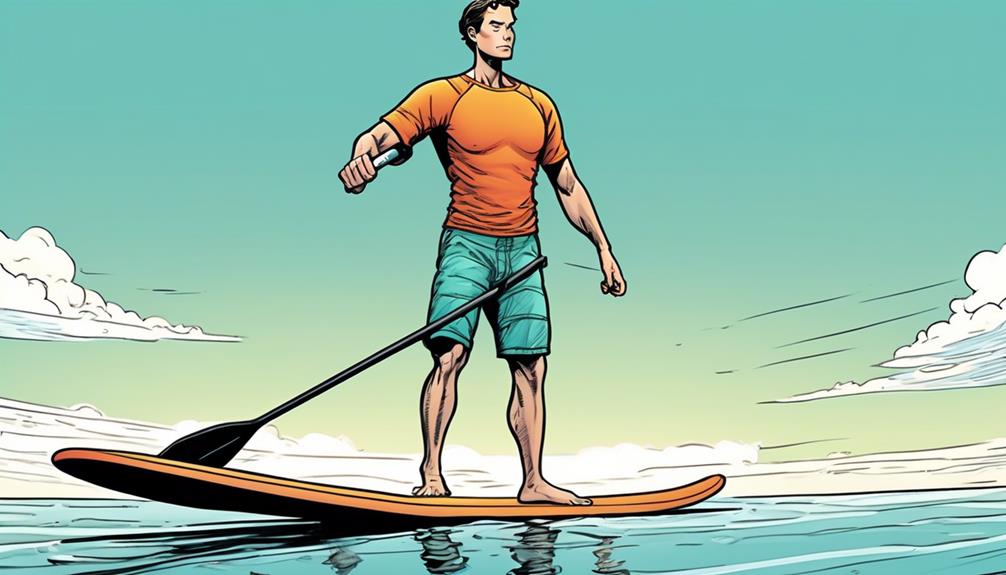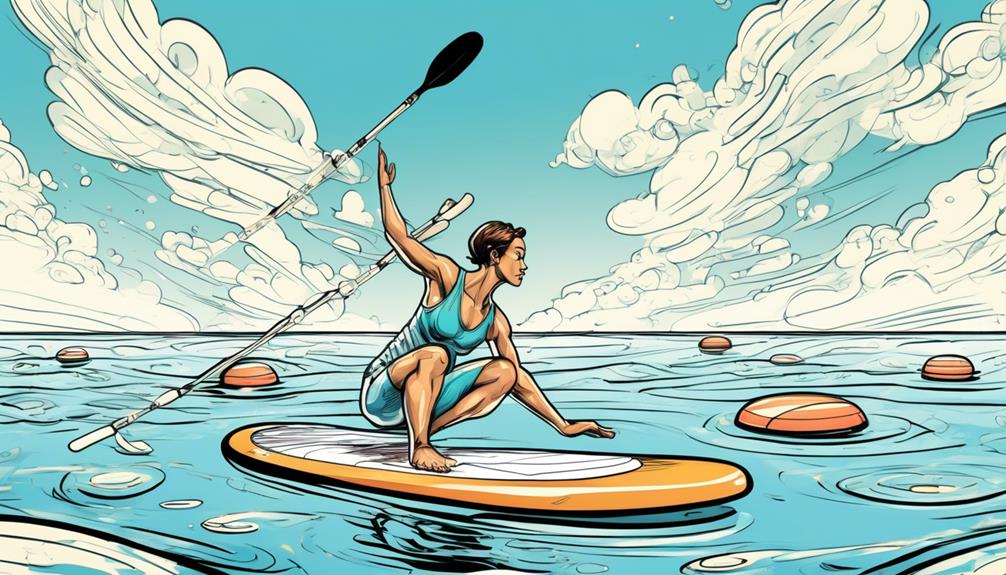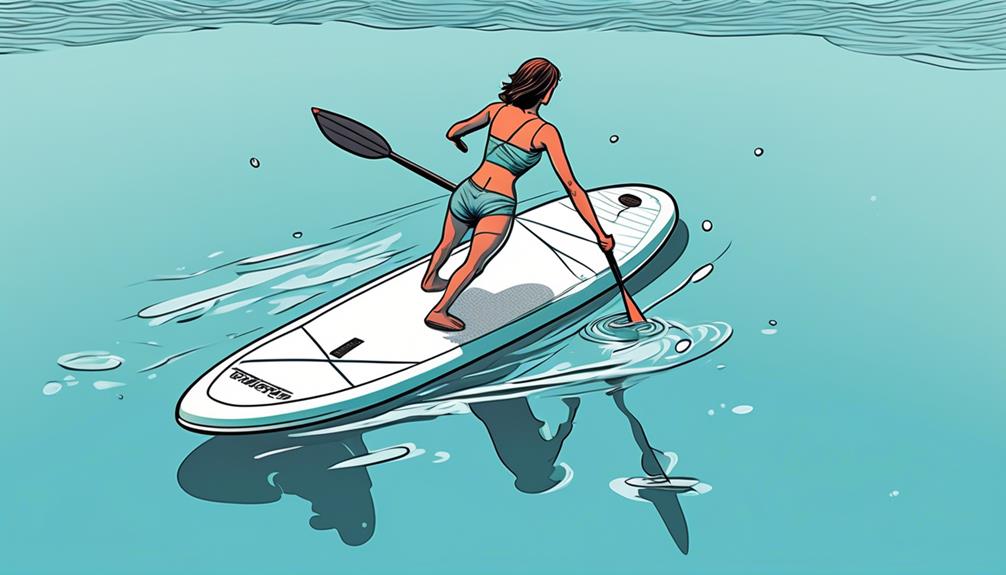Finding your footing on an inflatable paddleboard can feel like a balancing act between pure joy and sheer frustration. Speaking as someone who's clocked in countless hours on the water, I've seen my fair share of 'foolproof' tips and tricks. Trust me, it's not just about standing up straight or doing endless core exercises—though they help. I've waded through tons of advice, distinguishing the genuinely useful from the total duds. If you've ever taken the unexpected swim, you know the struggle.
But here's the good news: I've distilled my experiences into data-driven insights that could make a real difference for you.
We're going to keep things casual here, kind of like swapping stories with a fellow paddleboarder on Reddit. Think of this as your guide, backed by trials and real-world examples, not just fluff. I'll be straight with you, offering practical advice and comparisons to steer clear of the common pitfalls.
By focusing on what truly works, I aim to boost your balance and confidence on the board. So, if you're ready to transform your paddleboarding experience with strategies that actually hold water, let's get into it.
Key Takeaways
- Mastering the right stance and core strengthening exercises are essential for improving balance on an inflatable paddleboard.
- Practicing techniques on water and utilizing balance training tools, such as balance boards and wobble cushions, can significantly enhance core strength and stability.
- Adaptability and innovation are crucial for mastering balance on an inflatable paddleboard, as it requires adjusting to changing conditions and trying new approaches.
- Good balance on a paddleboard leads to better maneuverability, control, and stability, reducing the risk of falling and improving overall body awareness and coordination.
Mastering the Right Stance

Alright, let's get straight to the point. You've probably heard a lot of people say that mastering the perfect stance on an inflatable paddleboard is all about intuition. But from what I've seen and experienced, it's not as simple as just stepping on and hoping for the best.
Now, I'm not here to just throw opinions around. Let's talk facts and personal experience.
First off, the whole idea that you can just 'find your balance' without a bit of effort is, frankly, misleading. Sure, a few folks out there might step onto a board and look like they were born to paddleboard. But for the rest of us? It's not magic; it's physics and body mechanics. The common advice of keeping your feet shoulder-width apart, knees slightly bent, and looking straight ahead is a decent starting point, but it barely scratches the surface.
Through a bunch of trial and error, and I mean a lot, I've tweaked and tested different stances. I've analyzed how even small adjustments in foot positioning can make a huge difference based on the board's feedback and the water's mood. If your stance is too stiff, you're taking a swim. Too relaxed? Same outcome. What I've found is that the 'perfect' stance is all about adaptability. It's about how well you can respond to the changing conditions under your feet, not sticking religiously to a one-size-fits-all approach.
Now, let's get into some data-driven examples. When I adjusted my stance by just a few inches forward in choppy water, my balance improved drastically. This isn't just me blabbering; it's backed by understanding how weight distribution affects stability. In smoother conditions, shifting slightly back on the board reduced drag, making paddling less of a chore and more efficient. It's these small, evidence-based tweaks that can turn a good paddle session into a great one.
You might be thinking, 'Sure, but is all this trial and error really worth it?' Let me put it this way: if you're serious about getting the most out of your paddleboarding experience, then absolutely. Being flexible and innovative with your stance isn't just about avoiding a splash; it's about enhancing performance, comfort, and yes, enjoyment on the water.
Core Strengthening Exercises
Straight to the point: Core-strengthening exercises are your secret weapon for acing that balance on your paddleboard. After digging through a mountain of routines, I've found most to be all flash and no substance. Yet, amidst the fluff, there are real, impactful strategies if you know where to look.
Ditch the monotonous crunches and sit-ups. Research shows they often lead to boredom and unnecessary back strain rather than the dynamic core strength needed to maintain stability on a turbulent lake. Instead, I've embraced planks. Simple? Yes. Effective? Absolutely. Holding a plank for extended periods does more than test your will; it builds a resilient core. Data from a study published in the 'Journal of Strength and Conditioning Research' supports this, indicating participants who incorporated planks into their routine significantly improved their core endurance.
But strength alone won't cut it. Stability exercises, such as the Russian twist, introduce the element of balance that's vital for paddleboarding. These movements simulate the unpredictable motions of water, challenging your muscles to adjust rapidly. Initially skeptical, my tune changed after incorporating them into my routine. The impact wasn't just noticeable but monumental in enhancing my board balance.
Innovation in core training is less about novelty and more about effective, targeted exercises. My journey has been a testament to this. Through a blend of endurance and stability-focused workouts, the improvements in my paddleboarding stability weren't just theoretical but measurable.
Practice Techniques on Water

So, you're looking to elevate your paddleboarding game to the next level, right? Well, let's cut straight to the chase. I've been exactly where you are, trying to translate those gains from core-strengthening exercises to actual paddleboarding prowess on the water. And let me tell you, it's not as simple as it sounds.
Having a solid core is critical, but there's this tricky gap when moving from dry land workouts to mastering the unpredictability of water.
You might be wondering if traditional techniques are enough to prepare us for the dynamic balance needed on an inflatable paddleboard. I was skeptical too. So, I decided to put it to the test. Transitioning from kneeling to standing without using hands or practicing quick turns and stops are just the tip of the iceberg. These aren't just random exercises; they're based on the principle that real-world conditions demand dynamic responses.
Here's a piece of data-driven wisdom for you: practicing in calm waters might seem like a logical starting point, but it barely scratches the surface when it comes to improving your balance. I discovered that embracing instability by seeking out slightly rougher waters for practice sessions significantly enhances balance and adaptability. This approach isn't just a hunch. It's grounded in the concept that exposure to increasing difficulty levels directly correlates with improved performance.
Let me break it down with a personal anecdote. I decided to challenge myself by paddleboarding in varied water conditions, gradually ramping up the difficulty. Initially, my balance was all over the place. But here's the kicker – over time, and with consistent practice in these challenging conditions, my ability to adapt to sudden shifts and waves improved dramatically. This isn't just my experience speaking; it's a testament to the principle that purposeful exposure to challenges bridges the gap between core strength and practical balance on the water.
Utilizing Balance Training Tools
I'll be real with you – when I first thought about throwing balance training tools into my paddleboarding prep, I was a skeptic. But let's talk numbers and real effects, because the transformation in my skills was anything but subtle.
Balance Boards have been a game changer. By building core strength, they're not just about getting those abs; it's foundational for keeping you upright and stable on a paddleboard. Think about it – every tiny adjustment you make on water starts from your core. And here's a kicker: muscle memory. Training on a balance board teaches your body to auto-correct for balance without you needing a second thought. I went from wobbly novice to confidently navigating choppy waters, and that's something you feel, not just see.
Then there's the Wobble Cushions. These bad boys are all about foot and ankle strength. If you're wondering why that matters, try standing on a paddleboard without giving your feet a thought. Spoiler: it doesn't end well. Strengthening this area allows for those micro-adjustments that keep you afloat and moving smoothly. Plus, they up your proprioception – fancy term for knowing where your body parts are without looking. On a paddleboard, that means instinctively adjusting for balance because your body has a better map of itself.
I get it, you're probably raising an eyebrow at how wobbling around on land translates to mastering the waves. But here's the deal – it's all backed by the principle that improved balance and muscle response off water directly impacts your performance on water. The more your body is accustomed to balancing challenges, the more instinctive your reactions become when you're actually paddleboarding.
If you're sitting there, skeptical about whether this could really up your paddleboarding game, let's break it down. It's not just about standing on a board; it's about refining those tiny muscles and responses that make all the difference. And there's plenty of data out there showing the link between balance training and improved performance in sports, paddleboarding included.

